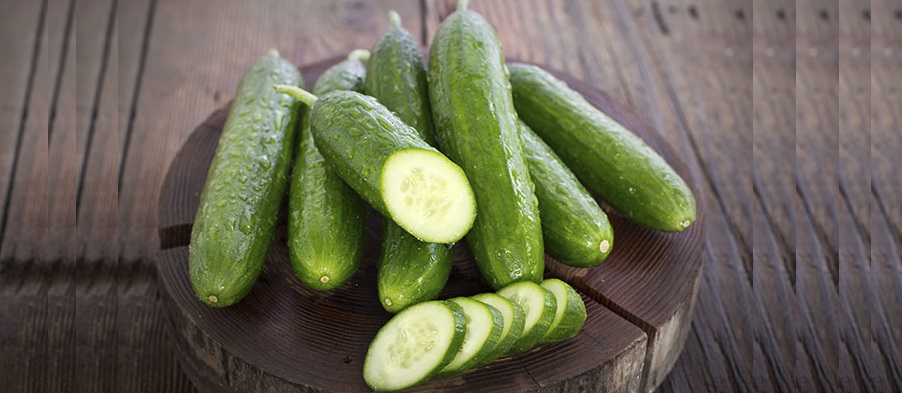What is the history of cucumbers and their cultivation, and where did they originate?
Cucumbers are believed to have originated in India over 4,000 years ago, and were cultivated in ancient civilizations such as Egypt, Greece, and Rome. The vegetable was also popular in ancient China and played a significant role in Chinese medicine. Cucumbers were introduced to the Americas by Spanish explorers in the 16th century.
What were some of the ancient cultures that considered cucumbers to be a valuable food and medicinal resource?
Several ancient cultures valued cucumbers for their food and medicinal properties. Some of these include:
-
Ancient Egyptians: Cucumbers were cultivated in Egypt as early as 2800 BCE, and were considered to be a symbol of fertility and happiness. They were also used as a natural remedy for a variety of ailments, including sore throats, headaches, and constipation.
-
Greeks and Romans: The Greeks and Romans also cultivated cucumbers, and considered them to be a valuable food source. They were often served at banquets and were also used as a medicine to treat a range of ailments, including sunburn, scorpion bites, and bad breath.
-
Chinese: Cucumbers have been cultivated in China for over 3,000 years, and were considered to have cooling and cleansing properties. They were often used to treat skin conditions, and were also believed to improve digestion and promote weight loss.
-
Indians: In ancient India, cucumbers were used for their cooling properties and were often eaten during hot weather. They were also used in traditional Ayurvedic medicine to treat a range of health conditions, including high blood pressure and arthritis.
-
Persians: Cucumbers were a staple food in ancient Persia (modern-day Iran), and were often served at royal banquets. They were also used in traditional Persian medicine to treat a variety of ailments, including headaches and constipation.
How were cucumbers used in ancient Egyptian culture, and what significance did they hold in religious practices?
In ancient Egyptian culture, cucumbers were considered a symbol of fertility and were often used in religious practices. They were also valued for their medicinal properties and were used to treat various ailments, including swelling, coughs, and fevers. Cucumbers were even featured in the walls of some tombs, including that of Pharaoh Tutankhamun. Archaeologists have found evidence that cucumbers were cultivated in Egypt as far back as 1500 BCE, and they were grown along the Nile River using a system of irrigation canals.
How were cucumbers valued in ancient Greek and Roman societies, and what role did they play in mythology and literature?
In ancient Greece, cucumbers were highly valued and believed to have healing powers. They were often eaten by athletes to improve their performance and were also used in cosmetics and to treat various ailments. The Greek philosopher Pythagoras was also said to be a big fan of cucumbers and believed they helped him maintain his health and longevity.
In ancient Rome, cucumbers were also highly regarded and were often served as a delicacy at banquets. The Roman emperor Tiberius was known to have loved cucumbers so much that he insisted on having them on his table year-round, leading to the development of the first greenhouse-like structures to grow cucumbers. Cucumbers were also used in Roman baths and were believed to have therapeutic properties for the skin. In Roman literature, cucumbers were mentioned in the works of Pliny the Elder and Juvenal.
What evidence exists to suggest that cucumbers were used in ancient Chinese medicine, and what health benefits were they believed to offer?
Cucumbers were first introduced to China around the 2nd century BCE and quickly became an important crop due to their nutritional and medicinal properties. In traditional Chinese medicine, cucumbers were believed to have a cooling and calming effect on the body, making them a valuable remedy for conditions such as fever, inflammation, and high blood pressure. Cucumber juice was also used as a diuretic to promote the flow of urine and relieve urinary tract infections. Additionally, the seeds of the cucumber were used to treat constipation and other digestive issues. Overall, cucumbers were highly valued in ancient Chinese medicine for their ability to promote overall health and wellbeing.
How did cucumbers make their way to the Americas, and what impact did they have on Native American cuisine and culture?
Cucumbers were first introduced to the Americas by European explorers in the 16th century. They quickly became popular in North America and were widely cultivated by Native American tribes. Cucumbers were valued for their fresh flavor and cooling properties, and were used in a variety of dishes such as salads, soups, and stews. Some tribes also used cucumber juice as a remedy for sunburn and other skin irritations. The introduction of cucumbers to the Americas had a significant impact on Native American cuisine, and they continue to be an important ingredient in many traditional dishes today.
What role did cucumbers play in the diet of ancient Jewish communities, and how were they used in traditional recipes and ceremonies?
Cucumbers were an important part of the diet in ancient Jewish communities, especially during the summer months when they were plentiful. They were used in a variety of traditional recipes, including salads, pickles, and soups. In addition to being a tasty and refreshing addition to meals, cucumbers were also used in religious ceremonies. For example, during the festival of Sukkot, Jews would wave a bundle of branches that included a palm frond, a willow branch, and a myrtle branch, as well as an etrog (a type of citrus fruit) and a cucumber. The cucumber was included in this ritual because its shape was believed to represent the human spine, and the act of waving it was thought to promote health and vitality. Cucumbers were also considered to be a symbol of fertility and were sometimes included in wedding ceremonies.
How were cucumbers used in traditional Indian Ayurvedic medicine, and what properties were they believed to possess?
Cucumbers have a long history of use in Ayurvedic medicine, which is a traditional healing system originating in India. In Ayurveda, cucumbers are believed to possess cooling properties that can help balance the body's doshas, or energies.
Cucumbers are often used to soothe and cool inflammation, particularly in the eyes and skin. They are also thought to help purify the blood, support digestion, and promote healthy kidney function.
In Ayurvedic cooking, cucumbers are often combined with other cooling and detoxifying ingredients like mint, coriander, and lemon to create refreshing and nourishing dishes. They may also be used in herbal teas and tonics for their health benefits. Overall, cucumbers are considered to be a valuable part of a healthy and balanced Ayurvedic diet.
What was the significance of cucumbers in medieval European culture, and how were they cultivated and consumed during this time period?
Cucumbers were first introduced to medieval Europe by the Romans, who brought them over from their conquests in the Middle East. However, cucumbers were not initially widely popular in Europe, and it was not until the Renaissance period that they began to gain more widespread acceptance as a food.
During the medieval period, cucumbers were primarily grown in monastery gardens and were used for both culinary and medicinal purposes. They were often pickled and preserved to be used as a condiment, and were also sometimes added to salads or used to garnish dishes.
In addition to their culinary uses, cucumbers were also valued for their medicinal properties during the medieval period. They were believed to have a cooling effect on the body, and were often used to treat fevers and other illnesses. Cucumber juice was also sometimes used as a skin tonic, and was believed to help clear blemishes and improve the complexion.
How has the cultural significance and use of cucumbers evolved over time, and what lessons can be learned from their rich history?
Over time, the cultural significance and use of cucumbers has evolved to reflect changes in society and advances in technology. While cucumbers were once a luxury item reserved for the wealthy, they are now widely available and commonly consumed around the world. In addition to their traditional use in food and medicine, cucumbers are now used in a variety of beauty and skincare products due to their hydrating and soothing properties.
One lesson that can be learned from the history of cucumbers is the importance of diversity in agriculture and the benefits of sharing knowledge and resources across cultures. The cultivation and consumption of cucumbers have been influenced by numerous cultures and regions, with each contributing their unique perspectives and innovations. By embracing diversity and promoting cultural exchange, we can continue to learn from the past and build a more sustainable and equitable future.


